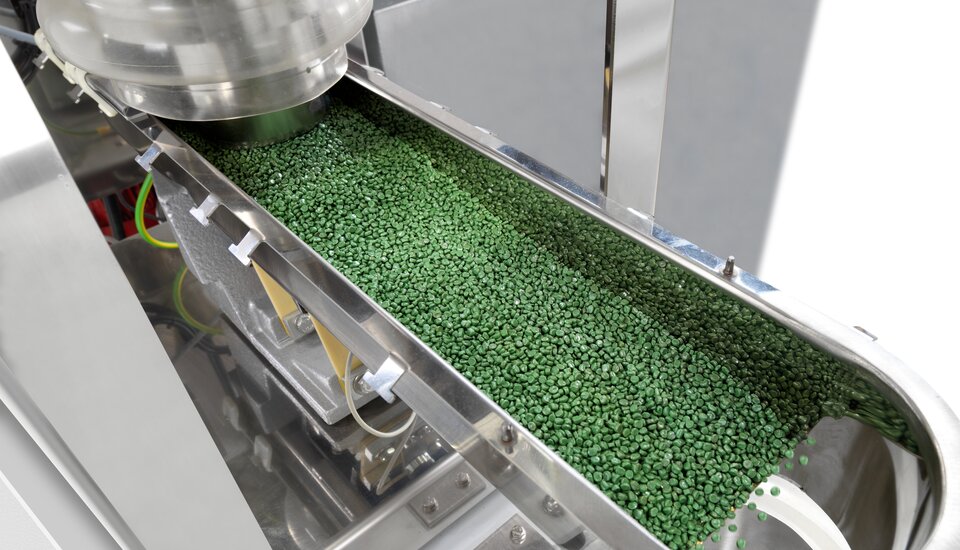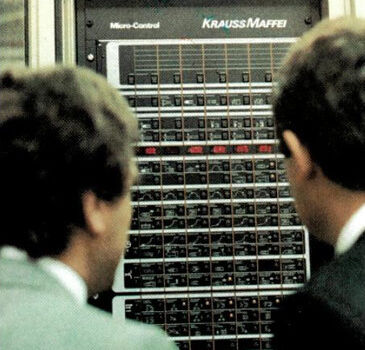
Trends & Markets
Aroma Protection with efficiency and style
| Dr. Sabine Kob
Co-Injection process for Coffee Capsules
Single-serve is the buzzword. In beverage filling, container sizes are shrinking all the time. Since Nespresso entered the field with its aluminum capsules, coffee powder has also been available in single portions. Due to the incredible growth rates, more and more companies are entering the market. Using what is called coinjection technology, Netstal now offers the ability to manufacture plastic capsules with a reliable barrier effect, including attractive IML decoration.
Whether it contains coffee or tea, the most important task of a capsule is to protect the contents from the effects of oxygen, light and moisture. Only then can the consumer enjoy the full aroma. The familiar Nespresso capsule consists of aluminum, because it has ideal barrier properties. Another Nestlé product, Dolce Gusto, also uses the metal. Here, in a capsule with a complex design, as the floor of the chamber that contains the coffee powder. However, manufacturing aluminum consumes an extreme amount of energy, making it only logical to take advantage of the benefits of plastic for the disposable product. The critical factor then becomes how to ensure aroma protection. The new solution Netstal uses the coinjection process and the exceptional barrier effectiveness of polyethylene vinyl alcohol (EVOH) and polyvinyl alcohol (PVOH).
The coffee capsule: global consumer megatrend
From 2008 to 2016, global sales of coffee capsules grew fivefold. Since 2000, the proportion of single-serve coffee has increased to over one-third. This represents growth of over 130,000 percent! However, the market leaderʼs share has dwindled to 11 percent since 2010 due to the 200 competing products that are now on the market. Many suppliers use plastic. However, it is wor thwhile to take a closer look at the details. Reto Gmür, Packaging Application Engineer at Netstal, explains: “Single-layer capsules made of polypropylene (PP), polylactide (PLA) or polybutylene therephthalate (PBT) have the wonderful property of being very easy to produce, but neither PP nor PL A have any barrier effect worth mentioning, and PL A is also not tasteless.
The entire wall thickness is only 0.4 millimeters.

SOPHISTICATED SYSTEM
Three layers for optimal aroma protection.
PBT blocks oxygen to a certain extent, but is a relatively expensive material and not very widely used.” Coffee capsules from low-end suppliers have a surprise hidden inside: They are packaged in little foil bags. The aroma that escapes from the single-layer capsules lingers inside the bag. The result is a pleasant scent when the capsule is opened but a disappoint-ing, flavorless experience when the coffee itself is consumed.
With Netstal and its partners, the aroma remains in the capsule
The high-tech solution Netstal developed along with Fostag (mold-making), Beck (automation), IMD Vista (camera inspection) and Verstraete (label) therefore makes use of the possibilities of multilayer technology and has propelled it to the highest level of quality and efficiency with the shared expertise. In coinjection molding, melt is injected by two (or more) injection units into the mold cavities through the same runner. The material that arrives first is the “skin” of the molded parts, while the following component(s) make up the inner area (“core”). In the case of coffee capsules, two layers of PP surround one layer of EVOH, forming an extremely thin sandwich – the entire wall strength is only 0.4 millimeters. While the EVOH (0.06 mm) protects the coffee, the PP (each layer 0.17 mm) takes over protection of the EVOH, because otherwise the material – which provides an effective barrier – would absorb moisture and lose its ability to provide a barrier against gas exchange.
Exhibit Fakuma 2017
Numerous application possibilities
The multilayer technology is also suitable for blocking light or using recycling materials. In the first case, the inner layer can be replaced by black polymer, while in the second, the exterior skin can be made of new material and the core of recycled plastic. Marcel Christen, Application and Product Manager at Netstal-Maschinen AG, has a positive outlook regarding the technology’s future. “Sandwich injection molding offers such unique opportunities that we can imagine many other application areas. In addition to portioning out coffee and tea, these applications include infant nutrition, soft drink concentrate and medications.”
Fakuma 2017
-
Coffee capsule with oxygen barrier and attractive IML decoration
The application, which was shown for the first time at the Fakuma in Friedrichshafen, Germany, saw an ELION 1200 with a main and an auxiliary unit producing the capsules in a four-cavity test mould with a cycle time of 4.9 seconds. In addition, the decoration was solved using automatically inserted IML labels via the automation system. The finished parts were stacked with the opening facing down, a camera integrated into the handling system controlled position and thickness of the EVOH layer, then the capsules were placed in a container as bulk material.















